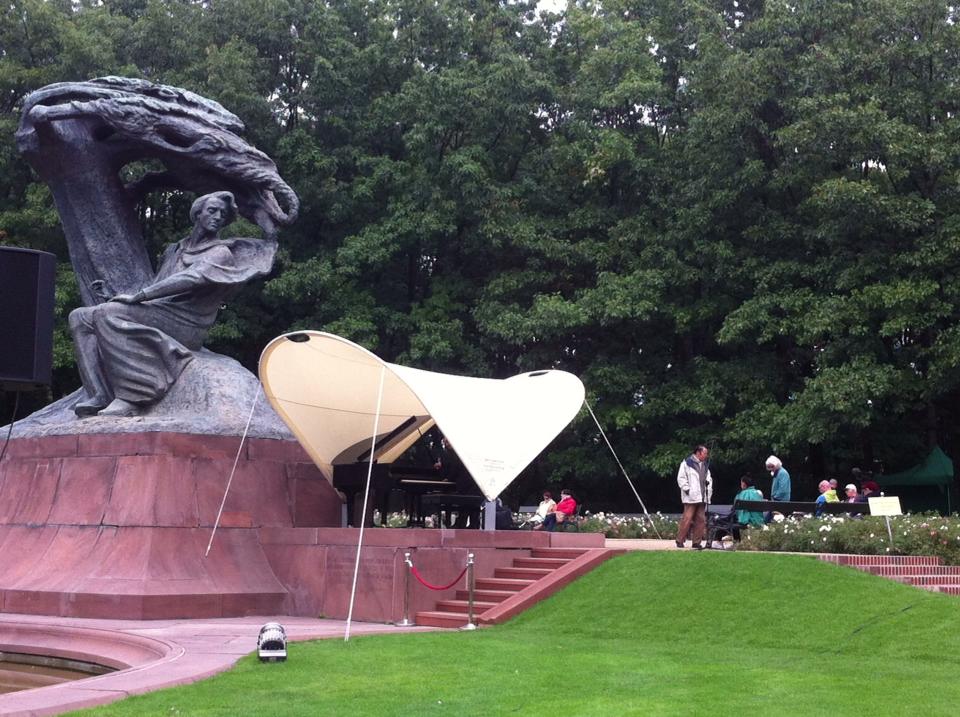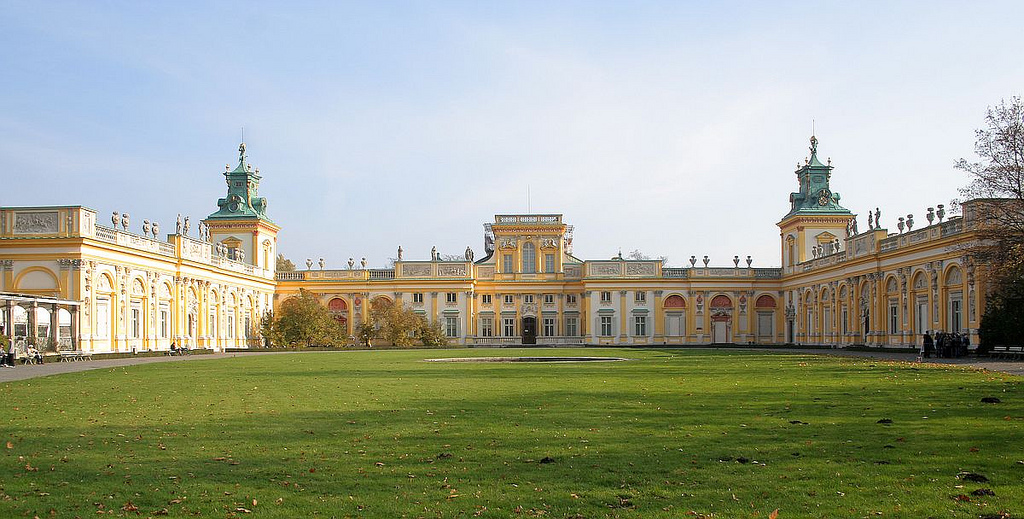Our favorite English writer is back, and this time he takes us to Warsaw, exploring the horrors of its Nazi past and its reemergence as a thriving Eastern European city. Walk the streets with our friend Marc Cave and enjoy his authentic tongue in cheek style as he explores Poland's capital city. For more from Marc click here for his itineraries for Mexico City and London's Shoreditch.
Tripper Tips:
A hotel that dates back to 1857 understandably needs some spiffy up and after an extensive renovation the Raffles Europejski Warsaw, has been restored to its former glory. The neo-renaissance palace built by Enrico Marconi is situated along the Royal Route next to the Presidential Palace in the Old Town, an ideal location for exploring the city.Warsaw is becoming A Thing. A Destination. But beneath her flirty, freshly applied make-up of bars, restaurants, and nightlife, there remains a careworn face. Brash neon hotel signs are slapped across the nightscape like cheap & cheerful mascara, to brighten up the eyes of a city that can never forget the horrors it has witnessed.
Don’t visit Warsaw for its wobbly imitation of Gotham City. Go for what lies beneath.
For one thing, whatever Trip Advisor tells you, there are no boutique hipster hotels here just yet. A Hilton that serves a Negroni but still leaves a silly little chocolate on your pillow and looks like a multi-level car park does not, unless you’ve come from Iowa, count. Instead, stay at the handsome Hotel Mamaison Le Regina in Warsaw’s historic district. It’s a nod to the elegance of Old Europe, with pleasing arches, tasteful brickwork, a civilized air and courteous, knowledgeable staff almost too shy to look you in the eye. Warsaw’s wistfulness resides in all of them. And that’s the point. This city makes you think about what collective tragedy does to a people.
If you step out of the hotel and turn left, a 150-yard walk brings you to a vantage point overlooking the expansive Vistula River. You’ll pass the noble, green-roofed St Kazimierz Church, also known as the Monastery of the Benedictine Nuns of the Blessed Sacrament. Originally it was a palace converted by Queen Anna Maria Kazimiera d’Arquien in 1692. Yes, there’s a history of splendid Polish monarchy buried beneath the tragedies of this country’s more recent Republican experiences. The monastery is open to visitors but is set way back from the street, nestling safely behind a large courtyard. It’s as if it has recoiled from the road, in mute dread of the Nazi stormtrooper boots which once pounded through it. Its dread would be justified, as it had to be rebuilt after the Germans bombed it in punishment for harboring Resistance fighters.
Everywhere in Warsaw feels heavy with history you can no longer see. There’s a fortune to be made with a VR app that shows you ‘Yesterday’ when you hold your phone over ‘Today.’
If you turn right instead of left out of Hotel Mamaison Le Regina, you walk over 50 yards of pretty cobbles that bring you to the boundary of what was the Warsaw Ghetto. Look down, and you’ll see a strip of metal, embedded in those cobbles. Like a 20-foot scar slashed across the old quarter’s face, it weeps the words “MUR GETTA 1940/GHETTO WALL 1943”. Stepping over this boundary marker takes you on a 15-minute walk to POLIN, the must-see museum built on what was the epicenter of the Warsaw Ghetto - Europe’s largest ghetto - where 400,000 Jews were imprisoned, and nearly all were killed or died of starvation or disease. But more of that in a minute. This walk takes you past elegant 19th Century residential terraces mixed up with large, depressing Communist-era apartment blocks. It’s a depressing mess. Boy, did the Soviets add salt to Nazi wounds. Warsaw is quiet here but not peaceful. There are no lights on in the windows. Where is everyone? Even on a bright, sunny Saturday morning, the atmosphere feels like an eerie necropolis of failed tyrannies, belief systems, and ethnic cleansing.
The POLIN Museum gives you the back-story. It visualizes the history of Poland’s most significant ethnic minority, the Jews, since their arrival in the 12th Century. And in so doing, it gives us a picture of the Poland of bygone eras, of which most of us have absolutely no idea. A thriving trading nation with centuries of royalist tradition and highbrow culture, Warsaw was the architecturally resplendent capital of 17th Century Poland. It turned on its Jewish community, sporadically but viciously, in the 18th and 19th Centuries. It was overrun and humiliated by the Nazis in the 20th. And in the second half of that century, while still on its knees, it was kicked again brutally by the Communists.
This story is told simply and visually in the POLIN museum - a vast, angular, strikingly modern building. When you exit, you find yourself in front of the equally powerful Monument to The Ghetto Heroes - a relief carved in remarkably heroic neo-classical, black painted stone. The juxtaposition of the museum’s new-era aesthetic and the monument’s old one is poignant. Especially when, as I experienced, you see a group of young Israeli tourists standing in front of the memorial singing Hatikvah - the anthem of hope which bears witness to their grandparents’ escape from the darkness of Old Europe and into the light.
So now you need a pick-me-up. Walk with me back to the historic area of the city in which our hotel is situated. The charming, cobbled Freta Street, right by the Hotel Mamaison, connects the 15th Century “New Town” to the 13th Century “Old Town” - together known as the Starówka and a Unesco World Heritage site. A historic square lies in its middle, crammed with shops and restaurants. But Freta Street is my favorite part. It has a beautifully gentle curve, which allows you to glimpse a long row of shop fronts snuggled up cutely to each other. Choose between café Feta Na Freta at no 29 or if you’re hungrier, just a little further, pass the Marie Curie Museum hit Podsamsonem or Pasieka.
As the fragrant shot of Polish cherry vodka hits the back of your throat, a sensation will envelop you. Existential joy. Firstly because you will start to feel your hands and feet again as you escape the clutches of Warsaw’s grim cold. Even in early November it’ll be sub-zero. But, like everything else here, the cold is quiet. No Arctic wind or rain, just a sinister, low-key, murderous cold. And so the woody warmth, hearty traditional Polish food and generous smattering of locals make Feta Na Freta or Podsamsonem a good refuge in which to kindle your gratitude - at having escaped both the weather and the horrors of Warsovian history.
In conclusion, Warsaw may have become trendy, but for me, it has yet to re-find itself. The consecutive stains of Nazism and Communism have all but obliterated this city’s original soul. But it is there. And like the Titanic, it can hopefully be raised back to the surface.
Meanwhile, how do you square the magnificence of the 17th Century Wilanów Palace or the statue of Frederic Chopin with the Monument to the Fallen and Murdered in the East (3 million Polish Christians, 3 million Polish Jews)? Or the monument in Stawki Street memorializing the 300,000 Jews herded like cattle from this very spot - the Umschlagplatz or Nazi ‘loading area’ - onto vehicles transporting them to the Treblinka death camp?
The Poles are a well-educated people still coming to terms with their country’s past. Unlike Germany whose behavior during World War II was unambiguous, Poland remains torn between victimhood and guilt. And as such, Warsaw is a treasure trove of visual and intellectual inquiry. Of architectural finesse and brute ugliness. Of proud royalty and totalitarian destruction.
Visiting this city is like watching a sumptuously depressing arthouse film. You have to think, but you can’t help but be drawn in by the story. To wallow in the sorrow. To be moved to incredulity and despair at humanity’s inhumanity. And somehow to be cleansed by it - your moral hard drive wiped, and your view of the world rebalanced.
It’s one hell of a weekend break from Brexit, Facebook and chia seeds.









